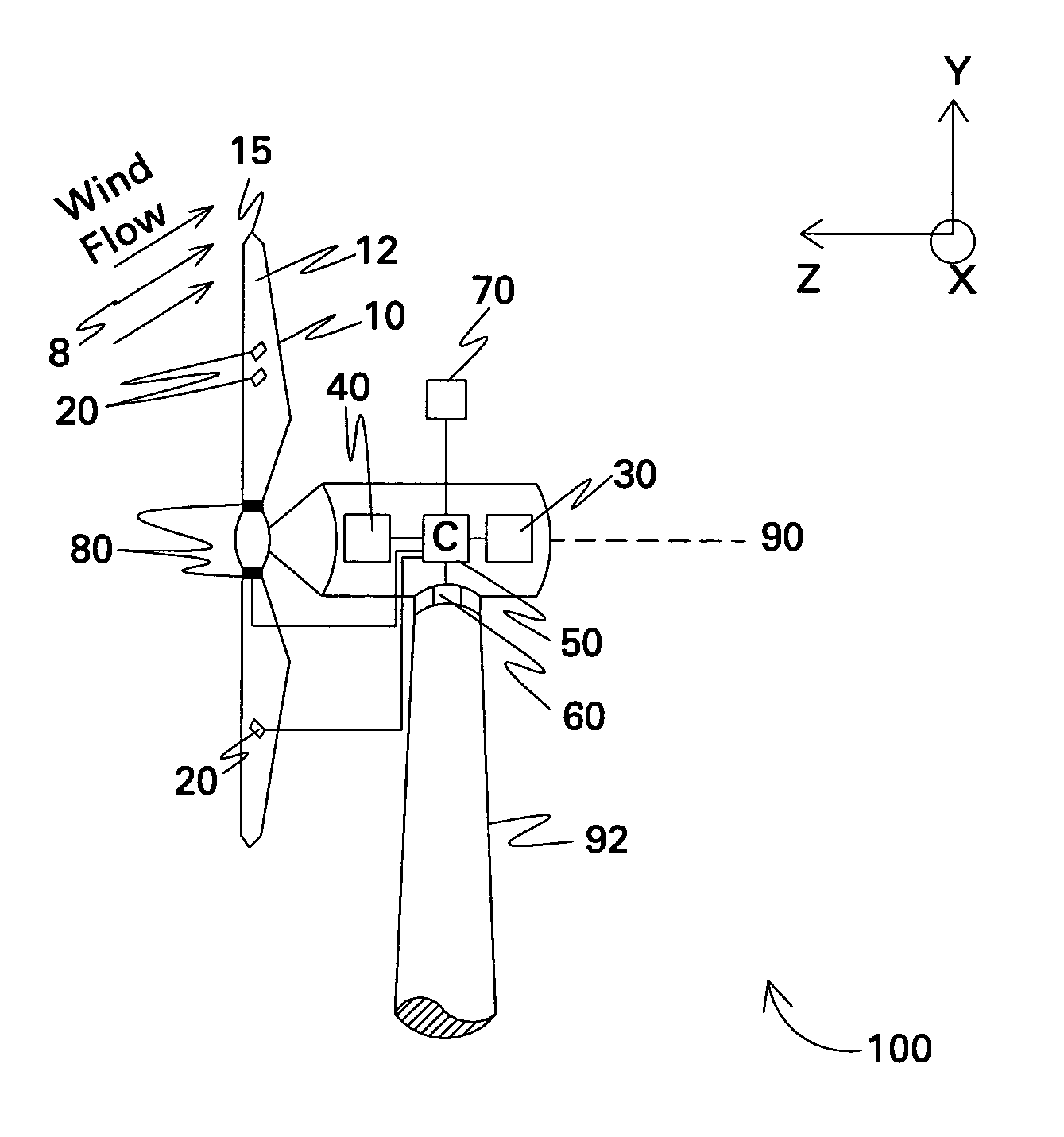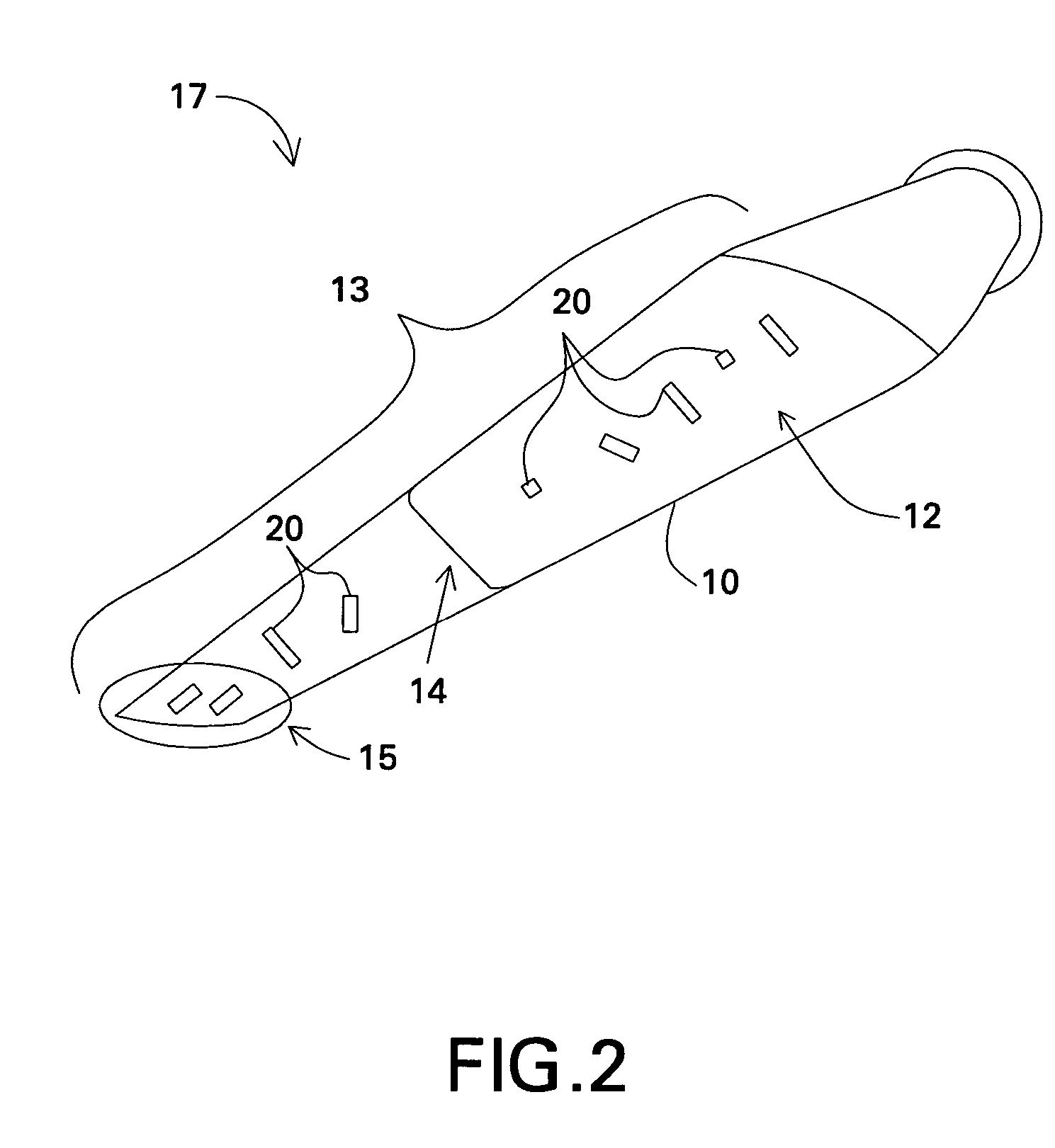Active flow modifications on wind turbine blades
a technology of active flow and wind turbine blades, which is applied in the direction of liquid fuel engines, vessel construction, marine propulsion, etc., can solve the problems of large torque, which is the driving force imparted by the wind to the wind turbine, and the provision to stop the flow control, so as to improve the performance, reduce load, and the effect of large wind turbine blades
- Summary
- Abstract
- Description
- Claims
- Application Information
AI Technical Summary
Benefits of technology
Problems solved by technology
Method used
Image
Examples
Embodiment Construction
[0020]FIG. 1 illustrates a wind turbine 100 in accordance with one embodiment of the present invention. The wind turbine 100 includes a wind turbine blade 10 configured to rotate about an axis 90 upon impact of an incident wind flow, for example, a wind flow 8 as shown. It is appreciated that as used herein, the terms “a”, “an” and “the” refer to “at least one” and plural variants thereof, unless otherwise specifically mentioned or indicated by the context. The axis of rotation 90 is along the z-axis in the axes system of FIG. 1, and the plane of rotation of the blades 10 is x-y plane, the x-axis coming out of the plane of the paper. An active flow modification device 20 is further disposed on the blade 10, and the blade and the active flow modification device 20 together form a wind turbine blade assembly 17 (shown in FIG. 2). The active flow modification device 20 is configured to modify the wind flow 8 proximate to the blade, thereby modifying a load on the wind turbine. The term...
PUM
 Login to View More
Login to View More Abstract
Description
Claims
Application Information
 Login to View More
Login to View More - R&D
- Intellectual Property
- Life Sciences
- Materials
- Tech Scout
- Unparalleled Data Quality
- Higher Quality Content
- 60% Fewer Hallucinations
Browse by: Latest US Patents, China's latest patents, Technical Efficacy Thesaurus, Application Domain, Technology Topic, Popular Technical Reports.
© 2025 PatSnap. All rights reserved.Legal|Privacy policy|Modern Slavery Act Transparency Statement|Sitemap|About US| Contact US: help@patsnap.com



